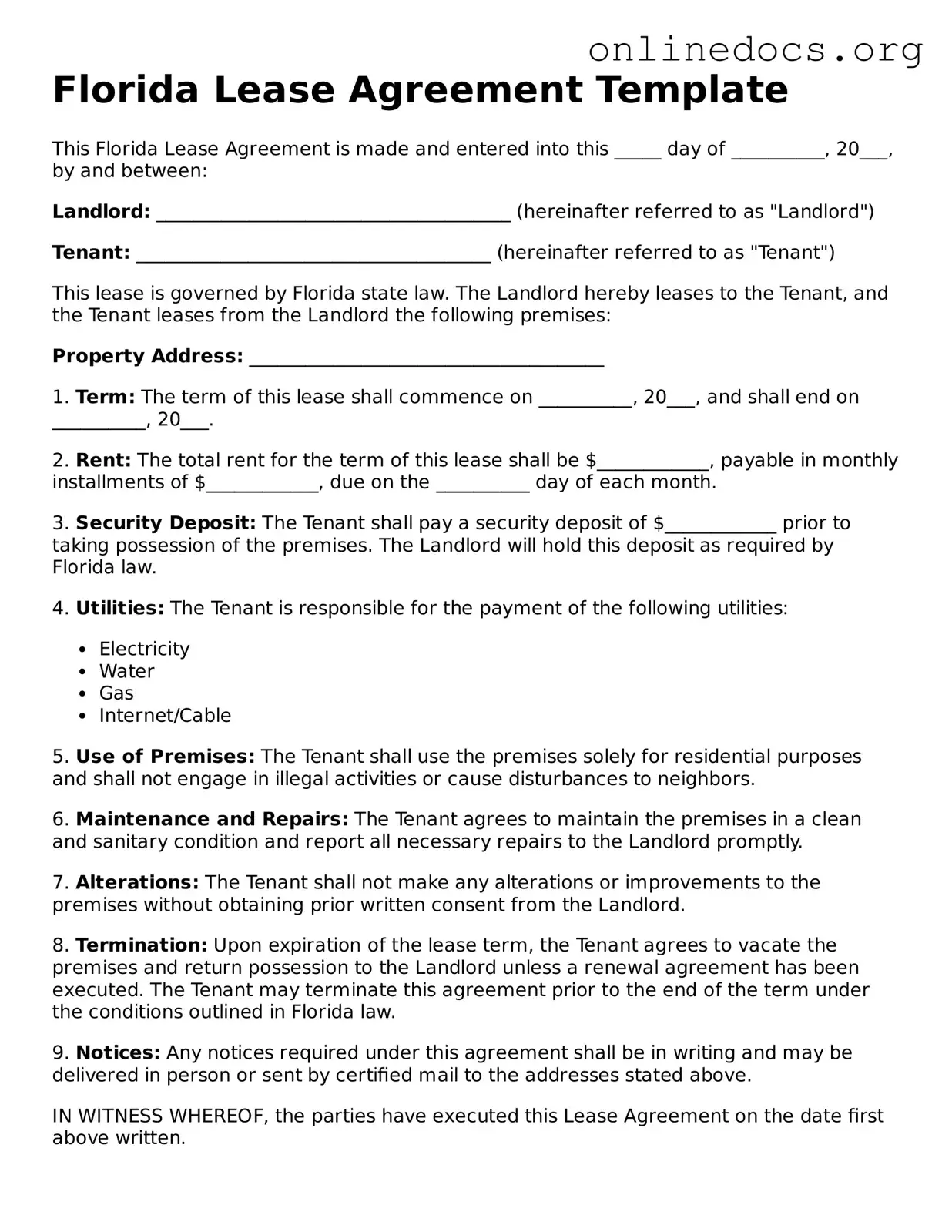When filling out the Florida Lease Agreement form, individuals often make several common mistakes that can lead to misunderstandings or disputes later on. Understanding these pitfalls can help ensure a smoother leasing process for both landlords and tenants.
One frequent error is failing to provide accurate personal information. Both parties must ensure that names, addresses, and contact details are correctly entered. Inaccuracies can complicate communication and legal proceedings if issues arise.
Another mistake involves neglecting to specify the rental amount clearly. The lease should state the exact rent due, including any additional fees or deposits. Omitting this information can lead to disputes over payment expectations.
Some individuals forget to include the lease term. It is crucial to define the duration of the lease, whether it is month-to-month or for a fixed term. Without this, both parties may have differing interpretations of their obligations.
Additionally, people often overlook the importance of outlining maintenance responsibilities. The lease should specify who is responsible for repairs and maintenance of the property. This clarity can prevent conflicts regarding property upkeep.
Many also fail to address the issue of late fees. If the lease does not mention late fees, tenants may not understand the consequences of missed payments. Clearly stating these fees helps set expectations and encourages timely payment.
Another common oversight is neglecting to include the security deposit terms. The lease should specify the amount of the deposit, the conditions for its return, and any deductions that may be taken. This information protects both parties and helps avoid disputes when the lease ends.
Some individuals do not review local laws that may affect the lease. Florida has specific regulations regarding rental agreements that must be adhered to. Ignoring these laws can lead to unenforceable clauses or legal challenges.
Additionally, people sometimes forget to include provisions for termination of the lease. Clear guidelines on how either party can terminate the agreement, including notice periods, are essential for protecting everyone’s interests.
Lastly, individuals may neglect to have the lease signed by both parties. A lease without signatures is not legally binding. Ensuring that all parties sign the agreement solidifies their commitment and understanding of the terms outlined.
